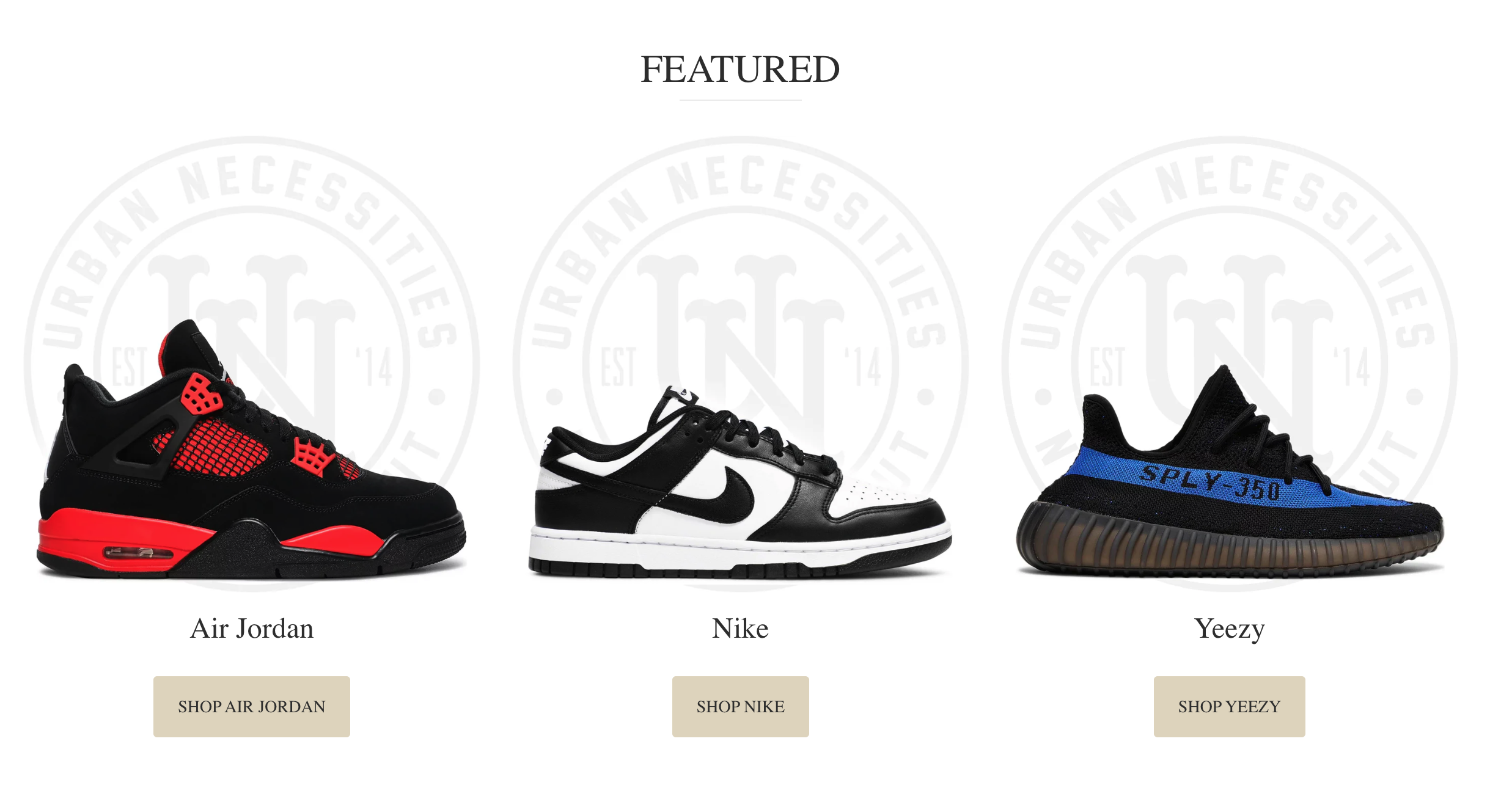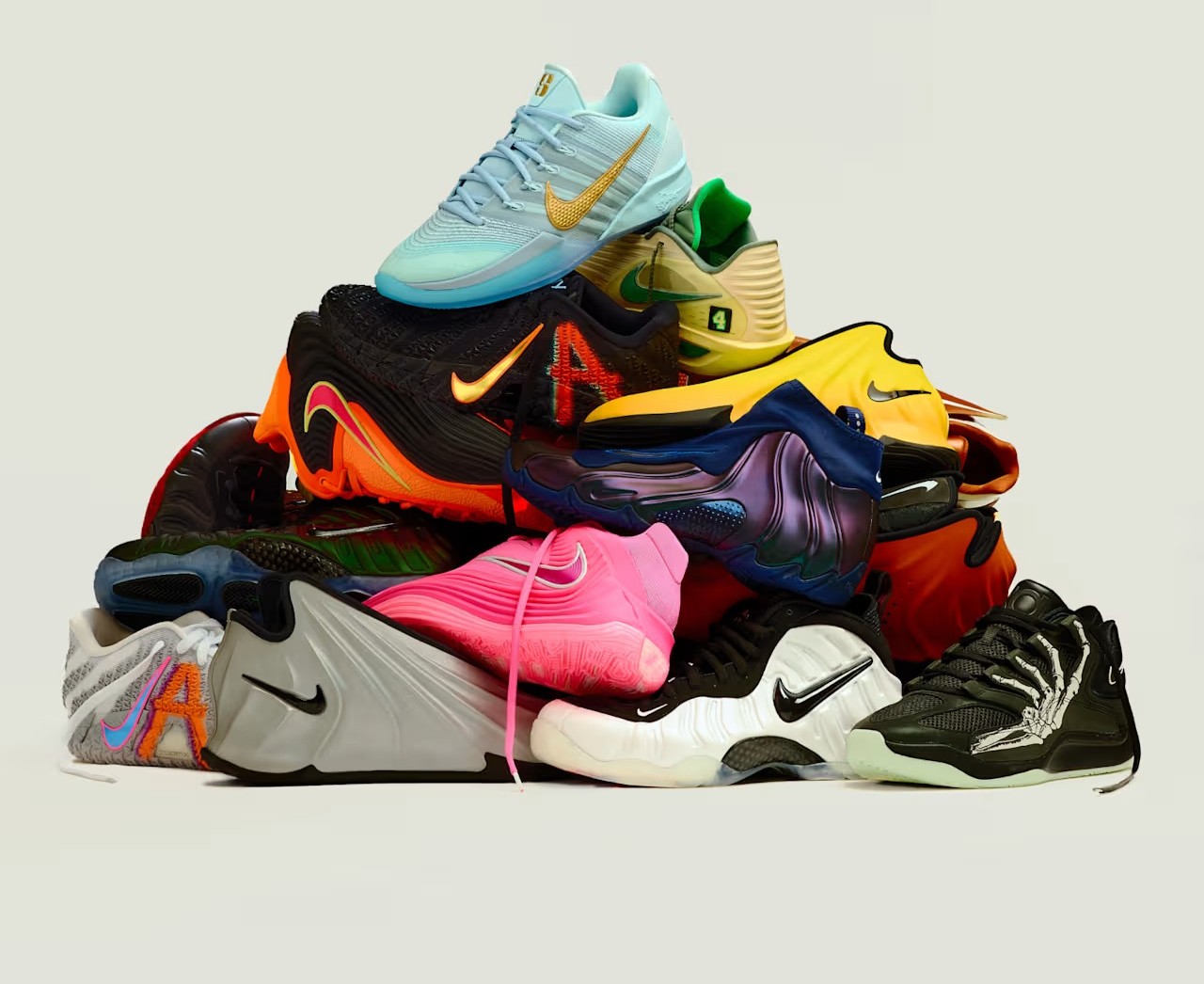There have been many sneakers inspired by baseball over the years. Shoes like Yankees-themed LeBrons, Jackie Robinson Air Maxes, and Giants-colored tie-dyed Dunk SBs have honored many different aspects of the game. There have been far fewer sneakers, however, designed for baseball. And that makes sense, considering that the game is typically played in cleats. But baseball players need to train off the field too, and although there’s less focus on these sneakers today than there was in the ‘90s, there have been some memorable training shoes over the years—including even signature lines for players like Ken Griffey Jr., Derek Jeter, and Shohei Ohtani. As we prepare for tonight’s 2025 MLB All-Star game in Atlanta, we’re taking a look at the best examples. Here are our picks for the greatest baseball sneakers of all time.
Year: 2024
There are not a lot of baseball players in the game today who can say they have their own signature shoe. Francisco Lindor was already a budding superstar in Cleveland, but his trade to the biggest sports market on the planet in New York City made it clear to New Balance that it was time to take Lindor’s partnership to the next level. The NB Lindor 1 features a partially detached ankle strap akin to the Air Jordan 20, but it’s the Lindor 2 that finds its way on our list. The midfoot strap does most of the work for the Lindor 2’s design, and the model comes in a wide array of colors to match the All-Star’s countless colored glove combos. —Ben Felderstein
Year: 2024
Not only is Shohei Ohtani the best player in baseball right now, if he can get fully healthy and become a full-time starting pitcher again, he just might go down as one of the greatest players in history. New Balance would have been out of its mind not to give Ohtani a signature collection, and to the brand’s credit, that’s exactly what it did. The New Balance Shohei Ohtani 1 really isn’t anything entirely special, but it is a perfectly clean design that comes in both a cleat and a trainer. Ohtani’s signature running man logo comes stamped on the heel, right alongside the brand’s signature NB. —Ben Felderstein
Year: 2015
Mike Trout was actually the first baseball player since Ken Griffey Jr. to receive a signature shoe from Nike. This happened shortly after receiving a hefty contract extension with the Angels, which is a wild way to start a season. The Nike Lunar Vapor Trout debuted during All-Star weekend in 2014, and was followed by the Lunar Trout 2 the following year. The design was immersed in a rainbow trout theme, taking literal inspiration from his name. Although it was an easy design choice it was such an appealing one. —Douglas Jase
Year: 1999
Barry Bonds’ first signature FILA model is some kind of wild Air Jordan 11/Reebok Shaqnosis hybrid that works incredibly well. You can talk about steroids until you’re blue in the face all you want, but Barry Bonds is the greatest baseball player in history. It’s a shame that he never had the opportunity to have a signature Nike or Jordan sneaker like some of the other names on this list, but we’ll take these FILAs as a suitable substitute. If FILA dug back into its archives and dropped these today, this writer is convinced they’d have some pretty serious runs. —Ben Felderstein
Year: 2009
Derek Jeter was a living baseball legend during his playing days—the captain of America’s most beloved team. But none of that was ever really enough for his signature sneakers to overcome the “Team Jordan” stigma. Did they sell? Somewhat. Were they cool? Not even close. The Jordan Jeter Captain didn’t exactly overcome those challenges to become a hit, but it stands out as the strongest design in his line thanks to its more aggressive aesthetic. —Zac Dubasik
Year: 1998
Despite being the lowest ranked of the Ken Griffey Jr. signature sneakers included in this list, the Nike Air Griffey Max 3 is one of the most unique entries in his entire signature catalog. It shared a full-length Air Max sole with its predecessors, but explored new upper designs. The Griffey 3 brought back the strap from the first Griffey Max, but wrapped it around the midfoot, creating a near shroud-like effect, and paired that with an asymmetrical lacing system that flowed beneath. Overly complicated? Probably. But it made for one of the more visually interesting trainers of the era. —Zac Dubasik
Year: 2002
Ichiro was a sensation when he came to the MLB. He brought over Japanese culture to the States, including a signature sneaker he had with ASICS. Maybe at the time the high-top training shoe didn’t seem that cool—although Seattle Mariners colors will always look good. What’s awesome about these shoes, now, is that they look like a high-top 2160. If they came out now, people would freak. I think. They’re even cooler than the mythical Ichiro Air Jordan 1s right now, in my opinion. ASICS, bring them back. —Matt Welty
Year: 1996
Reebok’s Mobius Collection consisted of a series of shoes that featured 50-50 black and white color blocking and included models like the Shaqnosis, Blast, Kamikaze, and this: Frank Thomas’ signature Big Hurt, its name inspired by the Hall of Famer’s famous nickname. Like Thomas himself, the design was bold. It stands as Reebok’s most memorable baseball sneaker, and fitting for a player who’d go on to have 521 career home runs. —Zac Dubasik
Year: 1996
There’s no mistaking the Diamond Fury 2 as anything but the progression of the original Diamond Fury’s design. The model, which was popular amongst MLB players in its cleated form, looked as if its predecessor had been twisted and contorted into this familiar but new variation. It added even more dimension with its molded leather overlays and panels that overlapped the heel Air unit. It may not be as beloved as the original, but it was more ambitious. —Zac Dubasik
Year: 1997
Ken Griffey Jr.’s Nike Air Griffey Max 1 was a hard act to follow, but it’s safe to say he had another home run in his hands when it came to his second signature shoe, the Air Griffey Max 2. Designed by Tracy Teague, the sneaker was released in 1997 in the now-iconic “Freshwater” colorway. The model features a sleeker design on the upper as compared to its predecessor but still has Griffey’s “Swingman” logo on the shoe. Griffey also wasted no time showing out in his new model either, as the Seattle Mariners outfielder had two home runs against the New York Yankees in the first game of the season. —Victor Deng
Year: 1996
With a different sole, this Kenny Lofton-led trainer could have looked just as natural on a basketball court. The patent leather detailing, mini-Swoosh, and Zoom Air cushioning screamed “point guard signature model.” But the Tracy Teague design, and predecessor to Lofton’s K-Low signature sneaker, was actually a trainer with a turf-friendly outsole. The parallels made sense though, because the shoe was designed for speed, as Lofton was one of the best base stealers of his era. Despite getting his own shoe later on, this is the one that’s most associated with the Cleveland baseball legend. —Zac Dubasik
Year: 1996
Legendary Japanese pitcher Hideo Nomo made an immediate impact in the big leagues by winning National League Rookie of the Year and being named an All-Star with the Los Angeles Dodgers in 1995—so much so that Nike gave Nomo his own signature shoe the following season with the Air Nomo Max. Designed by Bill Cass, the silhouette’s design pulled inspiration from Ken Griffey Jr.’s signature models to even Nomo’s Japanese heritage with the anime series Gundam. The last time Nike retroed the Air Nomo Max was back in 2012, so it might be time for the brand to reissue the sneaker again. —Victor Deng
Year: 1995
While the Nike Air Diamond Fury was never an official signature shoe, many sneaker fans, including this writer, have always associated the model with the legendary Ken Griffey Jr. The sneaker was originally released in 1995, before Nike officially gave Griffey his own signature shoe. One of the more well-known Air Diamond Fury colorways was a Seattle Mariners-themed teal and black pair, which even had Griffey’s jersey number 24 by the ankle and a special “JR” logo on the tongue. It’s worth mentioning that Griffey’s time in the Air Diamond Fury was short-lived after he fractured his wrist on May 26, 1995, with an unbelievable catch that prevented an extra base hit. The injury sidelined Griffey for months, thus robbing fans of potentially seeing him wear the shoe at the ’95 MLB All-Star Game or the Home Run Derby. —Victor Deng
Year: 1994
Deion Sanders’ signature line with the Swoosh began in 1993 by way of the Nike Air Diamond Turf. Sanders officially debuted the model in ‘93 but it wasn’t until 1994 that it hit retail shelves for the first time. As the name suggests, the Diamond Turf was Sanders’ signature shoe for both the Atlanta Braves and the Atlanta Falcons that season, an absolutely absurd feat that only Primetime could have pulled off the way he did. The Diamond Turf also boasts one of the strongest logos in sports history. When designing Sanders’ signature logo, Nike decided to highlight both of his sports, having a football goal post sticking out of a baseball home plate, the perfect homage to a true sports unicorn. Over 30 years later, the Diamond Turf is in the midst of a retro return, hitting the feet of NFL stars like Patrick Surtain II and wrestling icons like Roman Reigns. —Ben Felderstein
Year: 1996
The top of the tops. This is the baseball sneaker that comes to mind when you think of baseball sneakers. The Nike Air Max Griffey 1. The sneaker first came out in 1996 for Ken Griffey Jr., who was the coolest baseball player at the time. And maybe the coolest baseball player ever. He was prime for a signature. He was doing Foot Locker ads with his dad long before he had a sneaker. The backwards hat-wearing, left-handed swinging second generation MLBer. Every kid wanted to be like him. His high-top training shoe with a strap and Air Max came in a Freshwater colorway to match the new color scheme of his Seattle Mariners. There’s also a pair for the original blue and yellow color scheme, too. The sneaker got retroed in 2009 and it took on a second life. Kids who never knew who Griffey was or saw him play were wearing them. And ones who did cherish the shoes, too. It wasn’t uncommon to see these with a pair of True Religions. And they’re still just as good now as they were back then. —Matt Welty
Read the full article here







